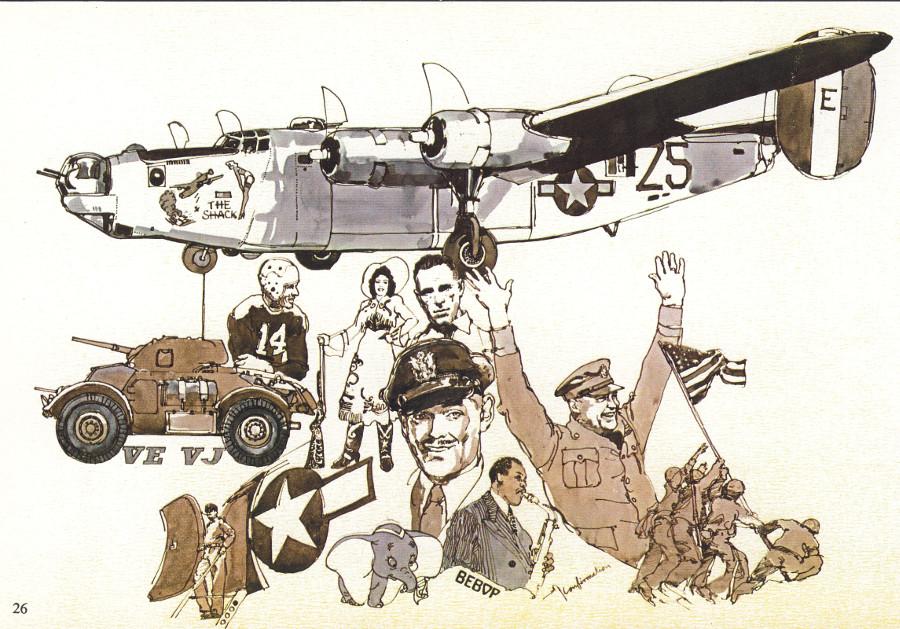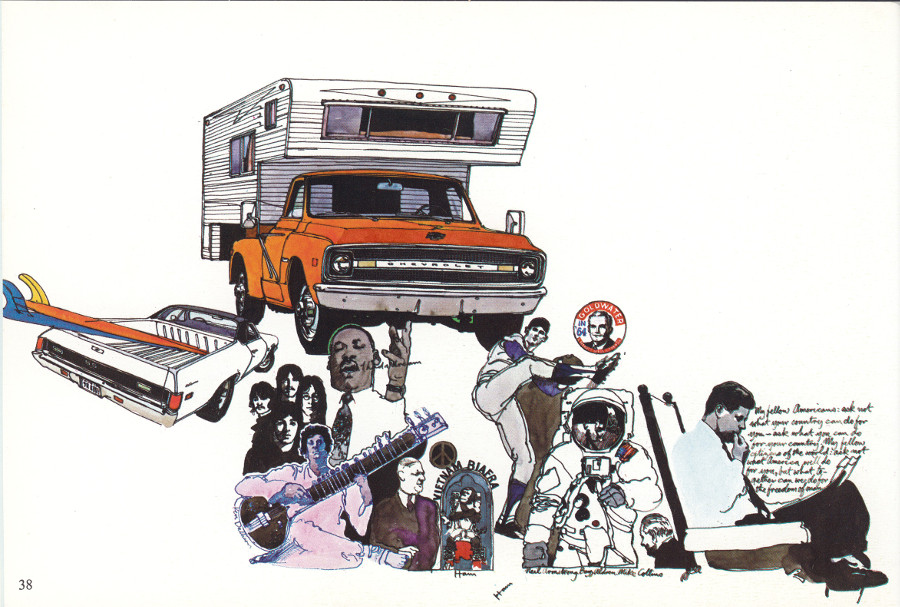By Robert Tate, Automotive Historian and Researcher
Images courtesy of Robert Tate's Collection
Published 09.19.2018
 An illustration of Louis Chevrolet from a 1970 Chevrolet history brochure (Robert Tate Collection)
An illustration of Louis Chevrolet from a 1970 Chevrolet history brochure (Robert Tate Collection)
In 1970, Chevrolet launched a huge advertising campaign reflecting on their history from 1911 to the present. Customers were greeted with a booklet published by General Motors called, “The Chevrolet Story 1911-1970.”
Today, the Chevrolet timeline is a part of our automotive history. Two of the early pioneers that founded Chevrolet were William Crapo “Billy” Durant, one of the founders of General Motors in 1908, and Swiss racing car driver and engineer Louis Chevrolet.
It all started on November 3, 1911 when Chevrolet Motor Company of Michigan became incorporated. The Classic Six models produced in 1912,1913 and 1914 were almost identical. In Chevy’s first production year, 1912, the price for their models was $2,150, a lot of money during the early days of automobile manufacturing.
1914 was the year when the famous Chevrolet “Bow Tie” logo had its debut. The Chevrolet models were introduced as a touring model only, and many consumers admired the styling. In ensuing years, Chevrolet sales were continued to grow rapidly. New options like an electric starter and electric lights were now becoming available. In 1916, Chevy manufacturing had grown to 70,000 units and 125,882 units the following year. In 1917, the first Chevrolet V8 engine was introduced in the D-series. Chevrolet also introduced its first truck models in 1918, which later would become a huge success. In 1919, Chevy produced its final models with wooden bodies, which have become rare and very collectible almost a century later.
 An illustration of 1920s history from a 1970 Chevrolet brochure (Robert Tate Collection)
An illustration of 1920s history from a 1970 Chevrolet brochure (Robert Tate Collection)
The early 1920s were also very prosperous times for Chevrolet. In 1922, more Chevrolet manufacturing plants were opened to keep up with consumer demand. That momentum obviously slowed in 1929, when the stock market crashed and the country entered the Great Depression.
 Chevrolet cars of the 1930s from a 1970 history brochure (Robert Tate Collection)
Chevrolet cars of the 1930s from a 1970 history brochure (Robert Tate Collection)
In the 1930s, Chevrolet introduced many new engineering features. A major body change was made public in the spring of 1934, when the Sport Sedan models introduced Chevrolet's first built-in trunk. On November 13, 1934, the ten-millionth Chevrolet was driven off the assembly line on the company's 23rd anniversary.
 An illustration of 1940s history from a 1970 Chevrolet brochure (Robert Tate Collection)
An illustration of 1940s history from a 1970 Chevrolet brochure (Robert Tate Collection)
On June 6, 1941, Louis Chevrolet, the co-founder of the company, died. The war in Europe started moving the auto industry in a different direction to prepare for wartime production. Months before Pearl Harbor, Chevrolet manufacturing had already been transitioning to be ready for the impending war.
 Chevrolet cars of the 1950s from a 1970 history brochure (Robert Tate Collection)
Chevrolet cars of the 1950s from a 1970 history brochure (Robert Tate Collection)
During the 1950s, General Motors’ post war styling changes included the popular wrap-around windshield, along with the 1950 Chevrolet Bel Air model that became a huge success. The power glide, the first automatic transmission, was also introduced in the low-price category. However, the biggest news for Chevrolet during the 1950s was the introduction of the 1953 two-seater Corvette sports car at the 1953 Motorama Show. Many Americans thoroughly enjoyed new Corvette and its styling when the first production models became available in June 1953. Only 300 units were manufactured that first year. On November 23, 1954, before a large crowd of visiting GM and government officials saw the 50-millionth Chevrolet come off the line, a 1955 Bel Air Sport. The 1955-1957 Chevrolet models attracted many customers -- they became known as the “Hot Ones.”
 An illustration of 1960s history from a 1970 Chevrolet brochure (Robert Tate Collection)
An illustration of 1960s history from a 1970 Chevrolet brochure (Robert Tate Collection)
The 1960s introduced names like Super Sport with 409 cubic inch engines and the popular Chevy II and 1964 Chevelle models, which were all great looking designs. The 1967 Chevrolet Camaro became very popular and served as the 1967 and 1969 Pace cars for the Indianapolis 500. Both pace cars had 396 engines.
 1970 Monte Carlo assembly line from a Chevrolet brochure (Robert Tate Collection)
1970 Monte Carlo assembly line from a Chevrolet brochure (Robert Tate Collection)
The last photograph of this story (above) illustrates Chevrolet employees assembling the new 1970 Monte Carlo models. Today, many of the 1970 Chevrolet models have become very rare and collectible.
In conclusion, Chevrolet will always be a part of our American automotive history and a chapter in our history books.
Bibliography
General Motors. “The Chevrolet Story 1911-1970.” Chevrolet Motor Division, General Motors Corporation.
Dammann, George H. “Sixty Years of Chevrolet.” Crestline Publishing, 1972.
Lamm, Michael. “The Great Camaro.” 1978-1979.



